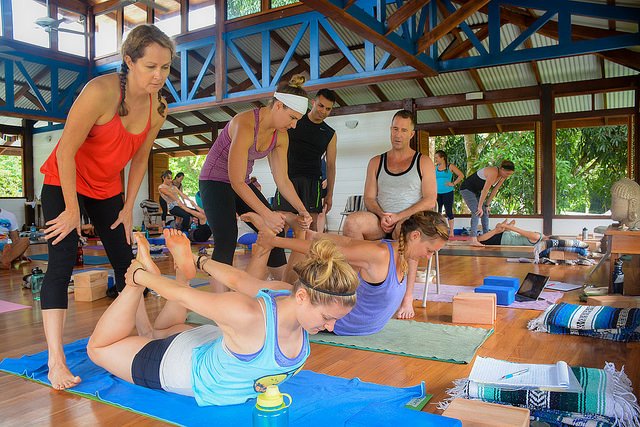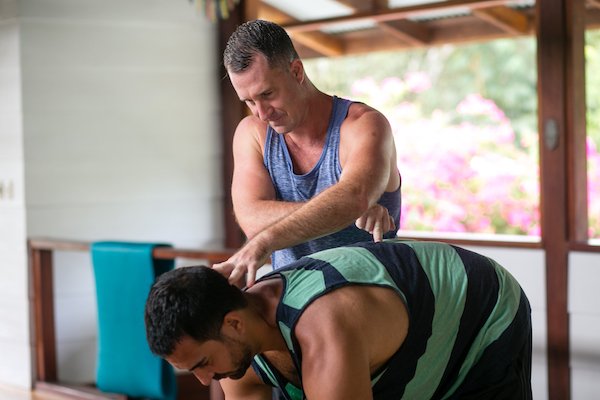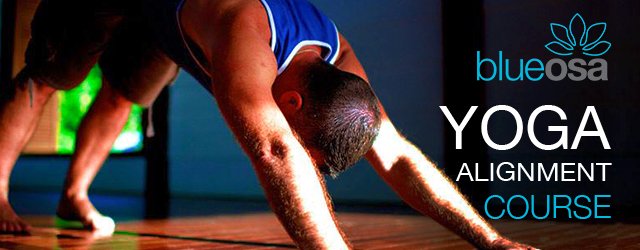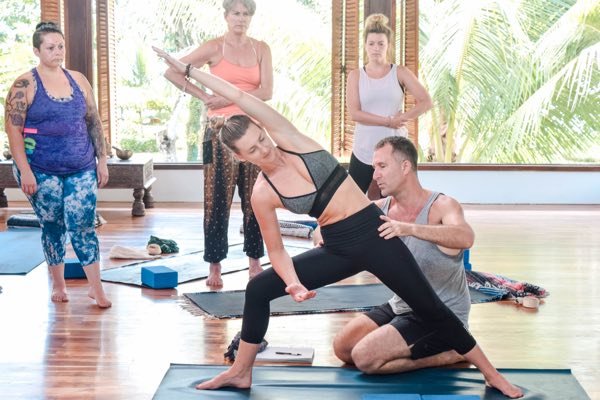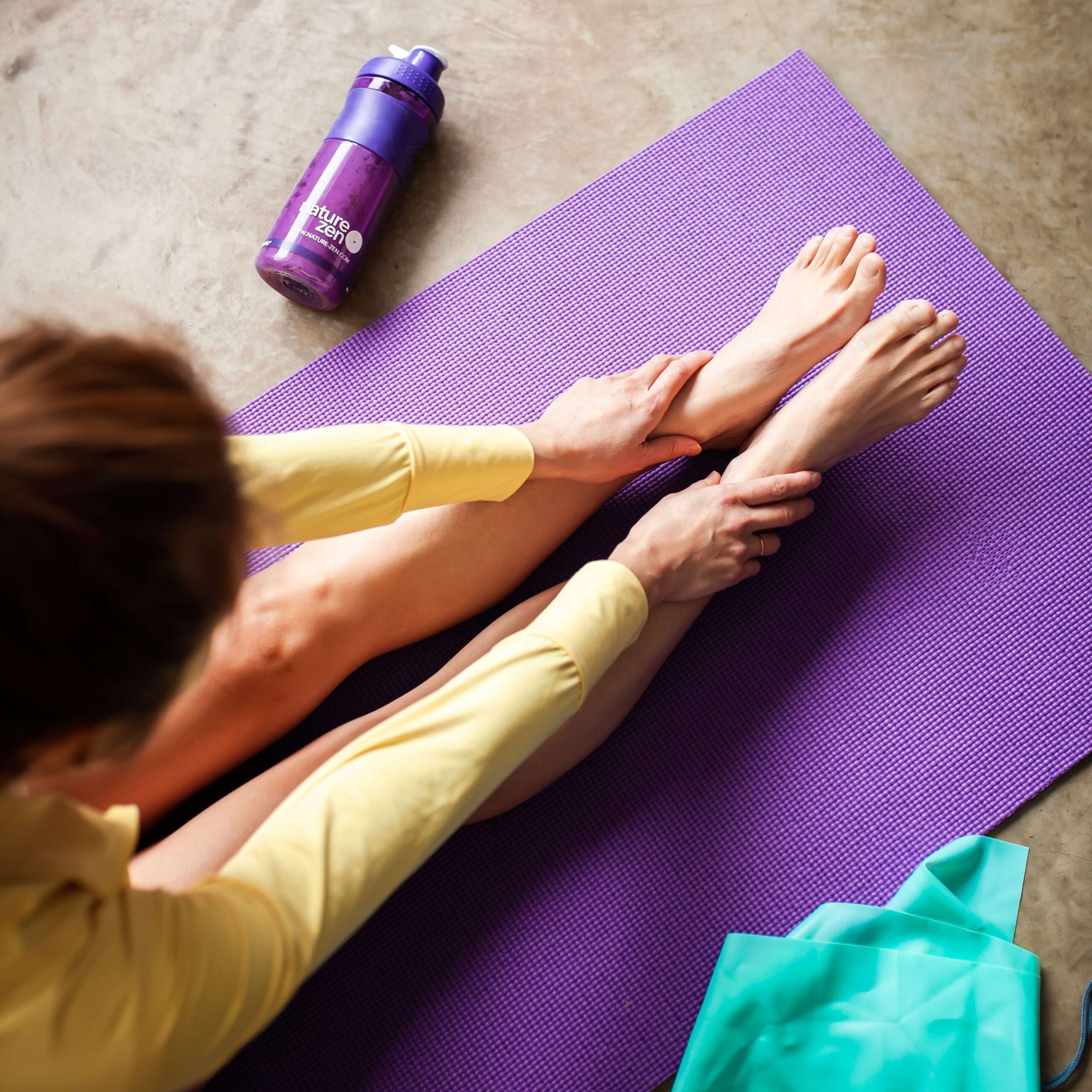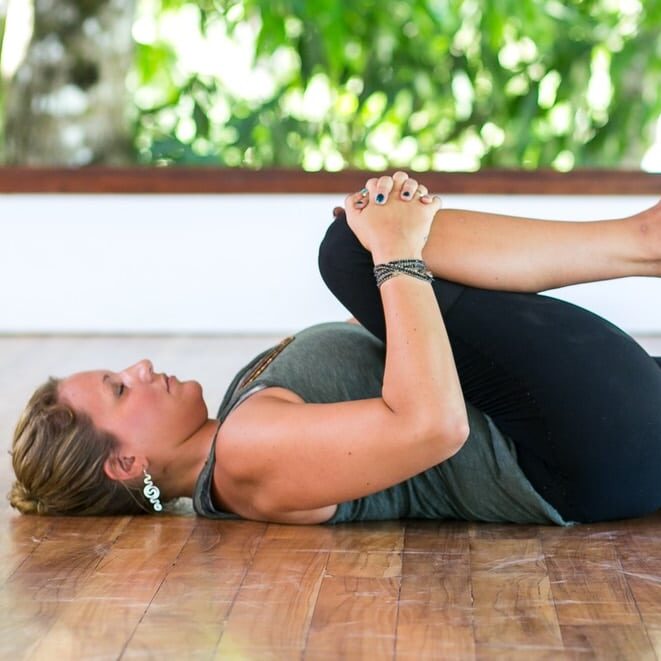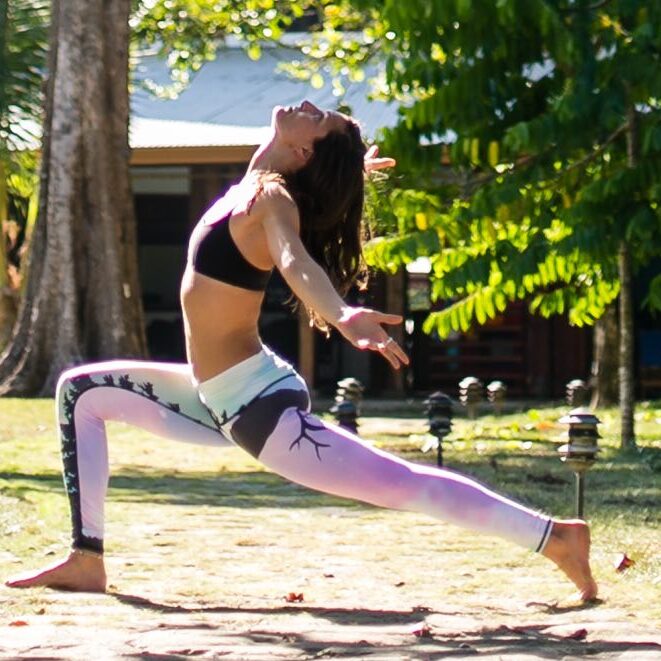Yoga for alignment means more than just lining up your knee with your big toe . . .
Stay with me for a sec.
Whether you are a seasoned yogi or just beginning your journey, understanding the yoga cues and tips for effective yoga alignment is essential to open up the doors to freedom.
That’s because yoga alignment is not just about perfecting poses; it is a powerful tool that allows us to align our bodies, minds, and spirits. By mastering this art, we can release the burdens of the past and find solace in the present moment.
I would even argue that yoga for alignment empowers us to let go of suffering and embrace a path of healing and self-discovery.
And yet, yoga alignment can be a tricky topic to grasp.
Now more than ever, there are so many types of yoga practices, making this a complex topic, meaning alignment cues can often be contradictory.
To make things worse, many teachers don’t even practice exact positioning!
To safely practice yoga, it’s essential to understand the principles of yoga alignment and how to adapt them to suit your body.
This article will look at invaluable tips to refine your yoga alignment practice.
Whether you are a seasoned practitioner or just starting your journey, these insights will help you gain confidence in your yoga practice and deepen your connection with yourself.
What is Yoga Alignment?
If you’ve been practicing yoga for a while, you might have noticed that many yoga teachers incorporate props and modifications in class.
The purpose of props is to help students to develop correct yoga alignment. For example, you might place your hands on blocks if you can’t touch the ground to keep your legs and spine extended in a forward fold.
But yoga alignment is more than just props . . .
Yoga for alignment is about using a set of flexible principles that adapts to different bodies and levels of practice.
Consider that from an AYAMA™ perspective, we never want to use props to force our body to go past its natural range of motion.
Following your body’s cues is more important than following “proper yoga alignment” that forces your body into a passive stretch.
Always remember my mantra: Stop Stretching!
The yoga world is obsessed with stretching, a paradigm that needs to change, and stretching is ultimately damaging more people than it is helping.
That’s because stretching does not help improve muscle function, and ample empirical evidence shows that stretching incapacitates muscle function.
Here’s the gist: While yoga alignment is essential, never force your body into a passive stretch just to follow a “proper” yoga cue.
Practicing Safe Alignment
Aligned yoga establishes a strong foundation for a great yoga practice.
- Proper yoga alignment activates the muscles while minimizing the risk of bodily injury.
- Better alignment helps you to become more aware of your body and practice acceptance.
- Correct posturing keeps the body happy and healthy.
- Yoga alignment adds ease and grace to a yoga practice.
With better cueing, positioning, and alignment, your body awareness will increase. If you are getting started with yoga, here is The Beginner’s Guide on How to Do Yoga at Home.
Over time, you will discover what yoga styles and poses are best for you and gain the confidence to flow through sequences.
But taking an individualized approach is crucial to maintaining a safe yoga practice.
To increase your strength while lowering your risk of injury, change the alignment of postures to suit your body’s capabilities safely.
Want to create a strong, safe, and effective foundation for your yoga practice? Sign up for a free trial and get instant access to my Yoga for Alignment course here.
Yoga for alignment: Why it matters
Although most yoga alignment cues are adaptable, some universal principles should be followed throughout your practice. By sticking to these basic principles of alignment, you’ll strengthen your body safely and healthily.
Yoga alignment according to AYAMA™
AYAMA™ stands for Applied Yoga Anatomy and Muscle Activation. It’s my revolutionary approach to yoga that focuses on activating the muscles (never stretching them out) and has helped hundreds of my students relieve pain for good.
From an AYAMA perspective, alignment in yoga is about positioning the body to prioritize safety, stability, and muscle activation.
Remember, yoga has nothing to do with stretching or flexibility. Instead, yoga is a tool to quiet the mind, so we can see ourselves for who we truly are. It’s a way to find clarity and vision as we develop deeper self-awareness.
If we want to live healthy, mobile, pain-free lives, we must focus on function over form, on activating and strengthening the muscles, and never stretching them out.
In doing so, we equip our bodies to handle stress. We reduce and eliminate pain, which clears the mind and opens the door to endless opportunities — life-changing possibilities for growth, expansion, passion, and purpose.
Tips for better yoga for alignment
1. Align from the base
Before moving up through your body, ensure that you are first aligning the base of a posture. This might involve positioning your feet on the mat or pressing your feet into the ground for stability and support.
Having a solid base is essential for a healthy and invigorating yoga practice, so it’s worth giving your feet some attention.
2. Stack the joints
This is essential in all yoga asanas, as it keeps your body stable. For example, in cat/cow position, your shoulders should be stacked over your wrists, while your hips are stacked over your knees.
3. Stabilize the core
Throughout your entire practice, make sure that your core is stable and engaged. Almost all yoga poses involve core strength, from inversions to twists.
And stabilizing your core helps to support your body, protect your spine, and strengthen your abdominal muscles. Core strength also helps in back poses. For standing postures, firm up your inner thighs and pelvic floor, creating a stable foundation for your spine to lengthen.
Next, lengthen your tailbone down and then pull your belly button in towards your spine.
4. The neck is an extension of the spine
To reduce the risk of neck strain, think of your neck as an extension of your spine. By keeping your neck aligned with your spine at all times, you will lessen the risk of damaging your upper vertebrae. Knowing how long to hold a yoga pose is also essential to keep the spine and body safe.
5. Use your breath
Always use your breath when moving in and out of poses. In yoga, you are most likely to injure yourself during transitions.
When we hold our breath, it creates tension in the body. So, don’t forget to exhale deeply, which will release any tension and allow your body to flow into the next pose.
How can proper yoga for alignment relieve pain?
What if you could eliminate pain altogether and finally tap into your soul’s calling so that you could live a life without limitations?
That’s the bold promise of AYAMA™, a revolutionary approach to yoga that has helped hundreds of people swap pain and injuries for strength and stability.
By prioritizing proper body mechanics, mindful awareness, and muscle activation, AYAMA™ helps prevent injuries and alleviate pain. Here’s how:
- Correcting Imbalances: AYAMA’s™ focus on alignment allows practitioners to identify and correct muscular imbalances or asymmetries in the body.
- Joint Stability: Through mindful alignment and muscle activation, AYAMA™ improves joint stability.
- Injury Prevention: AYAMA’s™ emphasis on safe alignment and mindful movement reduces the risk of injuries during yoga practice and everyday activities. By learning to align the body correctly and engage the appropriate muscles, practitioners can avoid strain, overuse, and repetitive stress injuries.
- Body Awareness: AYAMA™ cultivates a deeper sense of body awareness. By paying attention to alignment cues, muscle engagement, and sensations in the body, practitioners become more attuned to their physical state. This heightened awareness enables them to identify and address potential sources of pain or discomfort before they escalate.
Want access to hundreds of Applied Yoga Anatomy and Muscle Activation exercises, so that you can learn proper yoga alignment and start to live pain-free?
From guided yoga classes to workshops and courses to inspirational virtual events . . .
The Yogi Club is home to anyone desiring a deeper experience of yoga.
By developing an understanding of the basics of yoga alignment, you will gain the necessary tools to practice yoga.
Although understanding these universal principles is important, remember that the greatest alignment is what is right for your body.
Work within your own range of motion. Don’t force your body beyond its natural limits, and don’t let your teachers force you, either!
Don’t be afraid to ask your teacher for help, alter poses, or use props when necessary. Yoga is a personal journey. So practice with awareness and learn to move in the alignment your body requires.
If you would like to know more about alignment yoga, check out Blue Osa’s Yoga for Alignment Course!
About Yogi Aaron
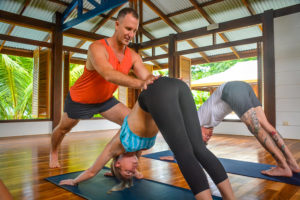
Yogi Aaron is the owner, operator, and lead yoga facilitator at Blue Osa and of the yoga teacher trainings.
Creator of Applied Yoga Anatomy + Muscle Activation™ Yogi Aaron brings three decades’ worth of study, mentorship, and experience into his teachings, with a strong emphasis on yoga therapy and alignment.
The Muscle Activation Yoga Classes is an exploration into your body, its muscles, and to learn how to improve its function through using Applied Yoga Anatomy + Muscle Activation™.
Find out more about yoga teacher trainings with Yogi Aaron at Blue Osa Yoga Retreat + Spa



